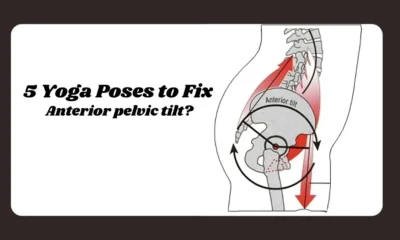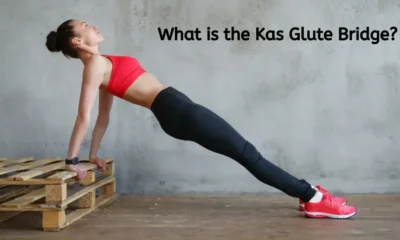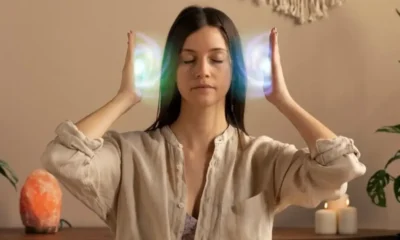YOGA
8 Tips to Avoid Knee Pain from Yoga
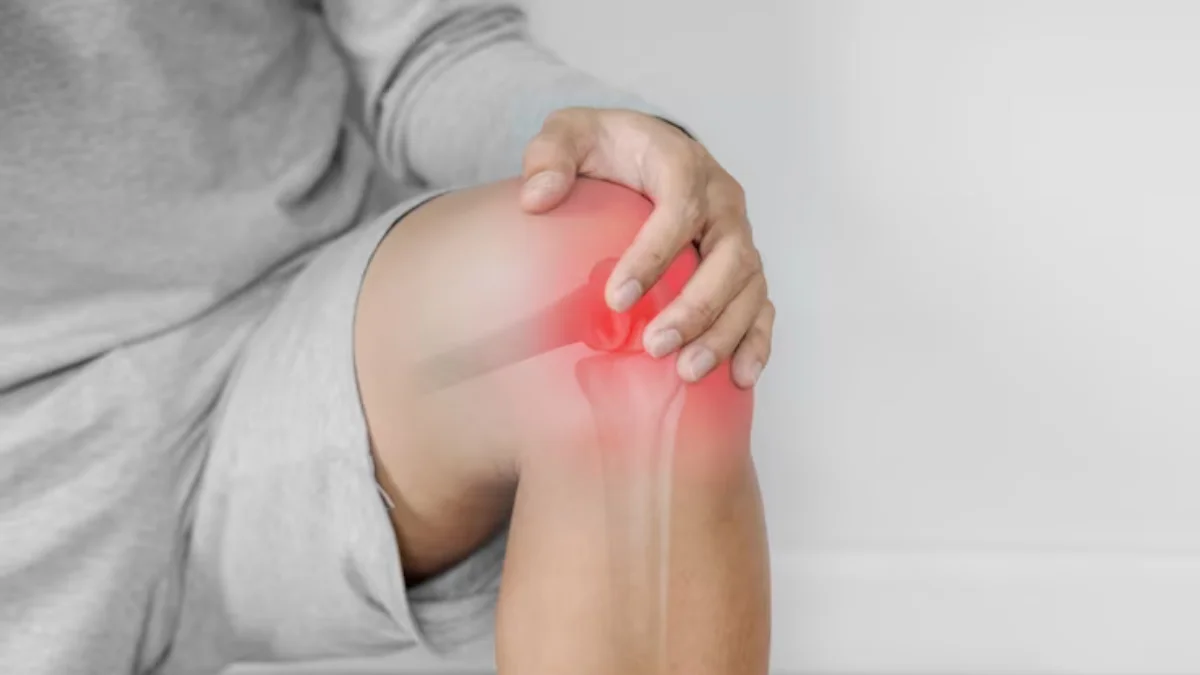
The knee is a hinge joint that is located between the thigh and the shin. It functions the same as a hinge on a door. The knee must be strong to hold a great amount of our body weight. Plus, it must be flexible enough to deal with the adaptations made of the ankle and foot. Knee pain from yoga is mainly related to one of the ligaments of the knee, or imbalanced muscles or the menisci.
Table of Contents
Knee anatomy, including muscles, ligaments and cartilage
Below is a short overview of the knee anatomy:
Ligaments of the knee
Ligaments either approve of movement or restrict movement. When the ligaments around a joint are in a relaxed position, they allow movement. When they are taut, they restrict movement. When the knee is straight, the ligaments are taut and restrict movement. When the knee is bent, the ligaments allow for movement.
Most knee injuries take place when the knee is bent. Yet in yoga practice, when a rotation of the flexed knee takes place, there is a large chance you might feel knee pain from yoga poses.
The knee has 4 main ligaments:
- Medial collateral ligament (MCL): On the inside of the knee closer to the midline.
- Lateral collateral ligament (LCL): Is on the outside of the knee.
- An anterior cruciate ligament (ACL): Inside of the knee and crosses to the front.
- A posterior cruciate ligament (PCL): Inside of the knee and crosses to the back.
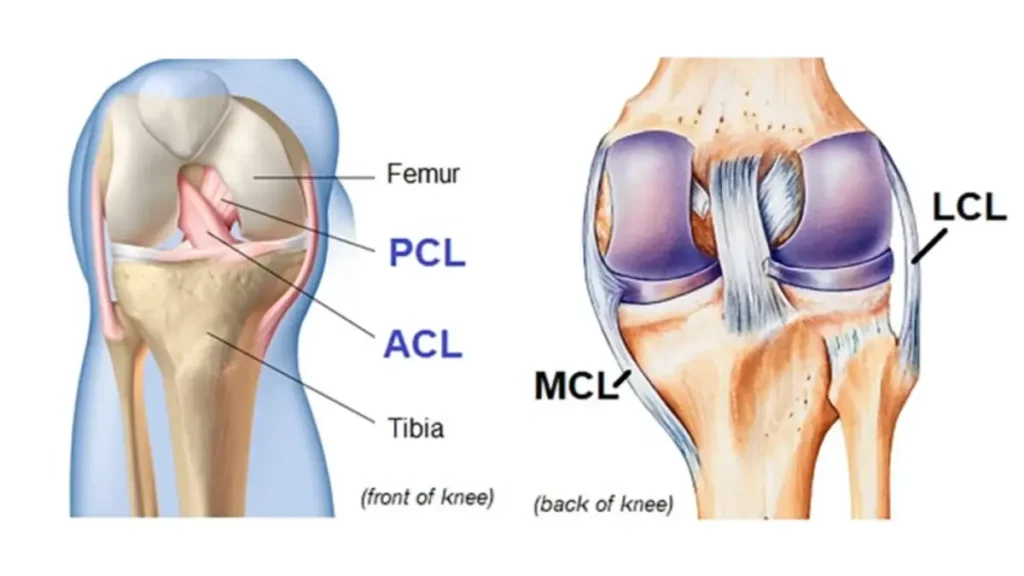
The cartilage of the knee
There are two main types of cartilage in knee anatomy: articular cartilage and the meniscus.
Articular cartilage covers the bones’ ends and allows for the bones to slide and glide on each other without friction.
The meniscus is a C-shaped piece of cartilage that serves as a cushion between the shinbone and thighbone. Each knee has two menisci. The menisci are not fixed, they move and distort their shape, and they slide as we move our knees.
The purpose of the menisci is to provide a cup for the thighbone to rest on top of the shinbone. The menisci serve as shock absorbers and make movements via its spongy quality.
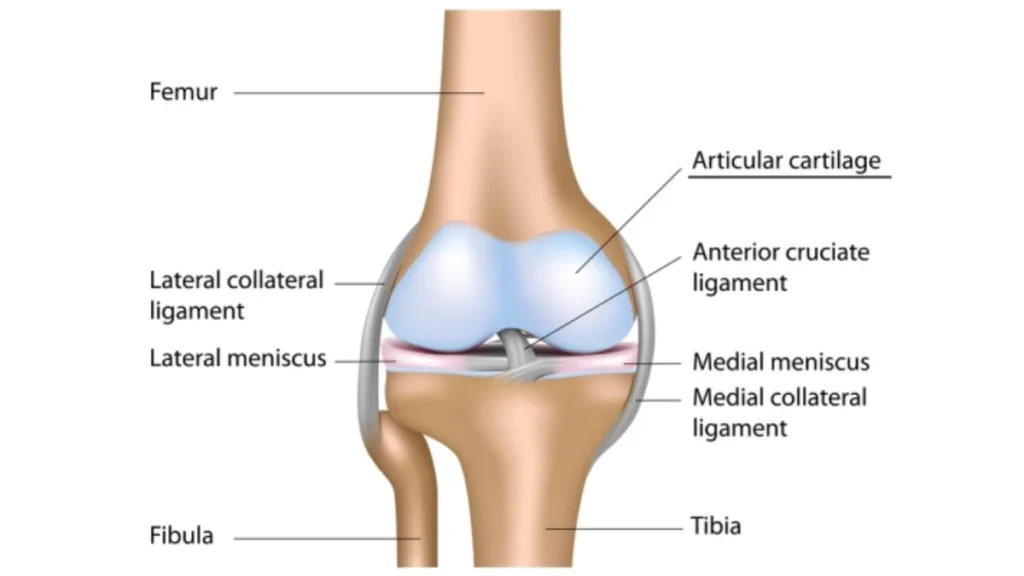
Muscle of the knee
Many muscles affect the knee joint, but the main muscles that allow the knee to perform its main functions are the quadriceps and hamstrings:
Quadriceps: A group of 4 muscles that sit on the front of the thigh. This group of muscles are responsible for allowing the knee to straighten. This movement is necessary for movements including standing from a seated pose, bringing your leg forward when standing, and kicking a ball.
Hamstrings: A group of 3 muscles sits at the back of the thigh and allows for the knee to bend. This group of muscles are crucial for lifting your foot to walk. The hamstring muscles can be strained or torn during sports and daily activities.
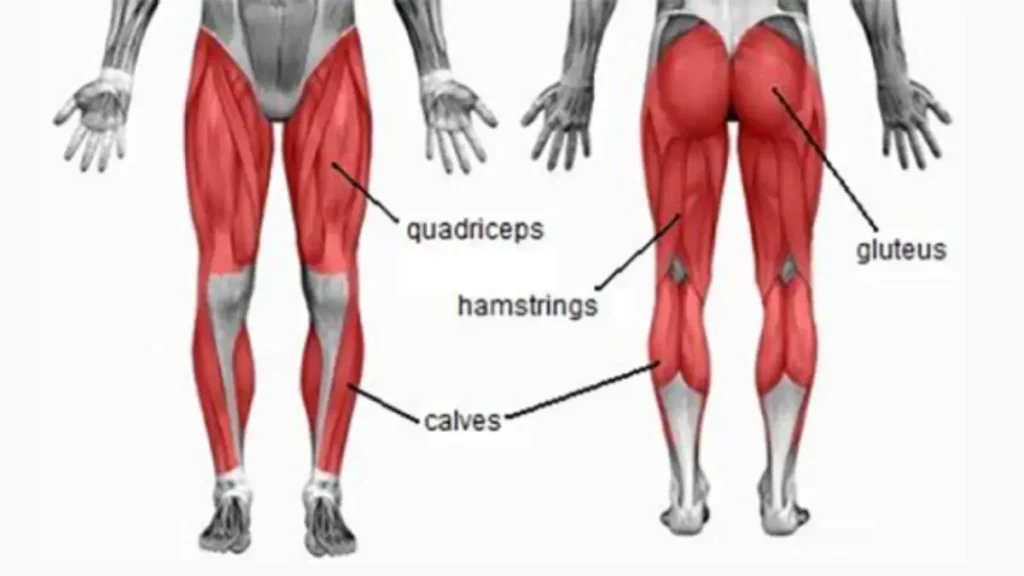
Risk Factors for Knee Pain from Yoga
Obligatory Discretion Advised: Always consult a physician when you are feeling any chronic pain.
Previous injury
Having hurt your knee before makes it more likely that you’ll injure your knee again. Additionally, you may experience knee pain from yoga due to a previous injury in the hips or feet, because of muscle imbalances.
Overweight
Being overweight increases the likelihood of knee injury from yoga due to the accelerating breakdown of joint cartilage. Because many yoga poses use body weight to increase stretching and twisting.
Lack of muscle flexibility or strength
Weak leg muscles and lack of flexibility are among the leading reasons for knee injuries. When knee muscles are tight or weak, they offer less support, Leading to your knee absorbing all the stress.
Over-exercise
While exercise is typically encouraged to prevent injury, over-exercise is associated with greater stress on your knees. This increases the chance of knee pain from yoga.
8 ways to avoid knee pain from yoga
1. Increase hip-joint flexibility to avoid knee pain from yoga
The knees are often forced to compensate due to the lack of mobility in neighboring joints. In yoga practice, this applies especially to the hip joint. There is a good chance yoga practitioners might not recognize that or choose to ignore it.
Therefore, keeping your knees safe starts with safely increasing the mobility in your hip joint. By stretching the muscles such as the glutes is a good way to increase hip joint mobility.
A great pose for safely increasing external rotation in the hip joint is the Reclined Pigeon Pose. This pose is very effective yet low risk because you do not use body weight.
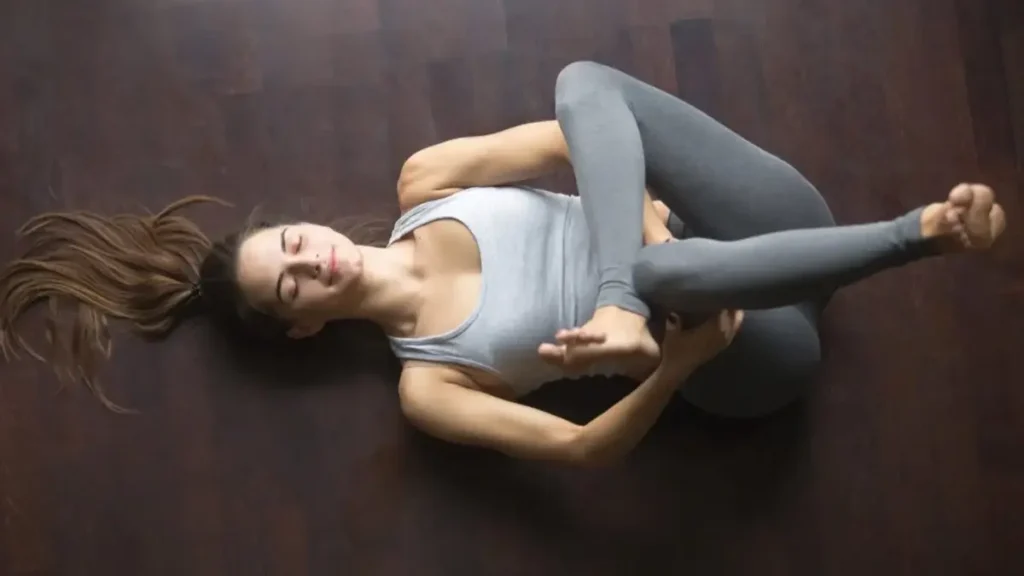
2. Avoid knee injury from yoga by flexing your feet
The knee joint is mainly a hinge joint, but it does allow for a certain level of rotation. When we force this rotation too much, we place our knees in great danger. So, we need to be mindful of any sensations of pain or discomfort close to or in the knee. But sometimes, we fail to notice that. Therefore, trying to stabilize the knee joint by flexing the foot of the leg which is in external hip rotation is a good way to prevent unnoticed knee rotation.
3. To avoid knee pain from yoga poses, lift your pelvis or your knees
The knee and hip joint are intimately related in function and movements. Lifting the pelvis can increase our perceived range of mobility and in this way prevent knee pain from yoga and reduce the risk of knee injury.
For example, placing a block underneath the front buttock in Pigeon Pose helps to reduce the risk of straining that knee into an inappropriate rotation.
On the other hand, lifting the knees about the pelvis can also help us prevent knee pain from yoga. For instance, when our knees are bent, place a cushion or block underneath the bent knee to keep the knees stable by engaging in a safe external hip rotation level, and in this way prevent us from pressing our knee downward as we fold our upper body forward:
4. Avoid hyperextending your knees to prevent knee pain from yoga poses
Hyper-extension knees, especially when we are bearing weight, will cause strain on the joint, as it puts unhealthy tension on the anterior cruciate ligament, posterior cruciate ligament, and popliteal ligaments. Doing hyper-extension has accumulated effects over time, regular hyper-extension knees might lead to swelling, pain, and a limited range of motion.
5. Correct feet alignment through balancing poses
The knee alignment is highly influenced by the alignment of the feet. When the ligaments on both sides of the knees are equally strong, the kneecap slides without restraint, plus the below patella cartilage doesn’t wear down.
Balancing poses with straight standing legs helps to train the muscles in the feet, which ensures a healthy arch and balanced weight distribution through both feet.
Balancing poses with the knees bent, helps to train the functional alignment of the knees, which prevents the knee pain from yoga.
For those who have unaligned feet issues, use a block to align your knees. Placing a block just below your knees between your shinbones in standing postures helps to maintain a safe knee alignment effectively in which the knees are aligned with your middle toes.
6. Don’t fully flex your knees
To prevent knee pain from yoga, avoid completely flexing the knees if they have knee issues or sensitive knees. In seated postures such as Hero Pose and Child’s Pose, make sure to lift the pelvis, thus the knees do not have to bend completely. For example, use a rolled blanket as a wedge between the calves and thighs to protect the knees.
7. Always avoid knee rotation
It is practical to elevate the pelvis in seated postures while making sure that both knees are resting and not dangling to avoid knee pain from yoga. Elevating the pelvis helps to facilitate the rotation in the hip joint, lifting the knees with rolled blankets or blocks to ensure that both knees don’t depress when bending forward. For instance, in Bound Angle Pose, sit on a block to facilitate a pelvic tilt and by placing a block underneath the knees, stabilise the knees from rotational forces.
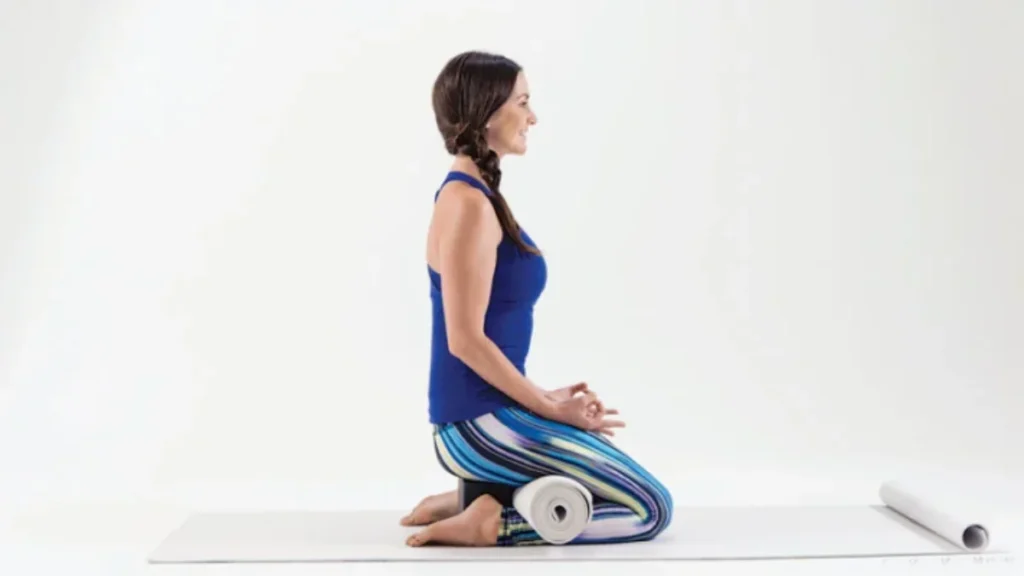
8. Keep both kneecaps off the ground
For many yogis who suffer from knee pain, doing a kneeling posture is painful. In yoga sessions, these people feel pain in poses such as Cat Pose or Tiger Pose. This could be easily prevented by elevating the shins, this way avoid any pressure on the kneecaps.
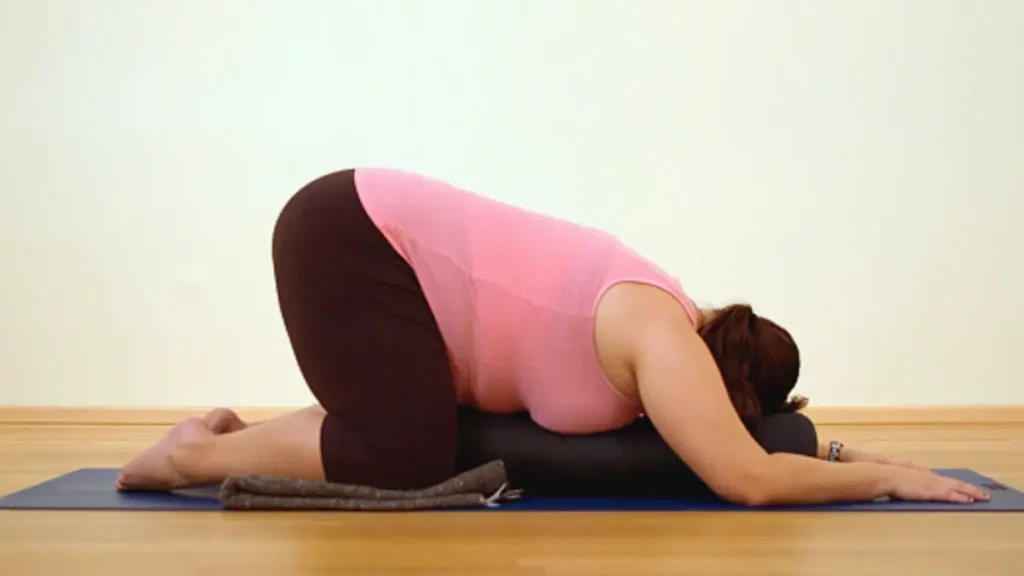
-

 GENERAL2 months ago
GENERAL2 months agoUncovering the World of кинокрадко: The Dark Side of Film Piracy
-

 GENERAL1 month ago
GENERAL1 month agoUnveiling the Art of преводсч: How Translators Bridge Language Barriers
-

 YOGA1 year ago
YOGA1 year ago4 Person Yoga Poses for Beginners
-

 GENERAL2 months ago
GENERAL2 months agoThe Journey of iamnobody89757: From Anonymous User to Internet Sensation

